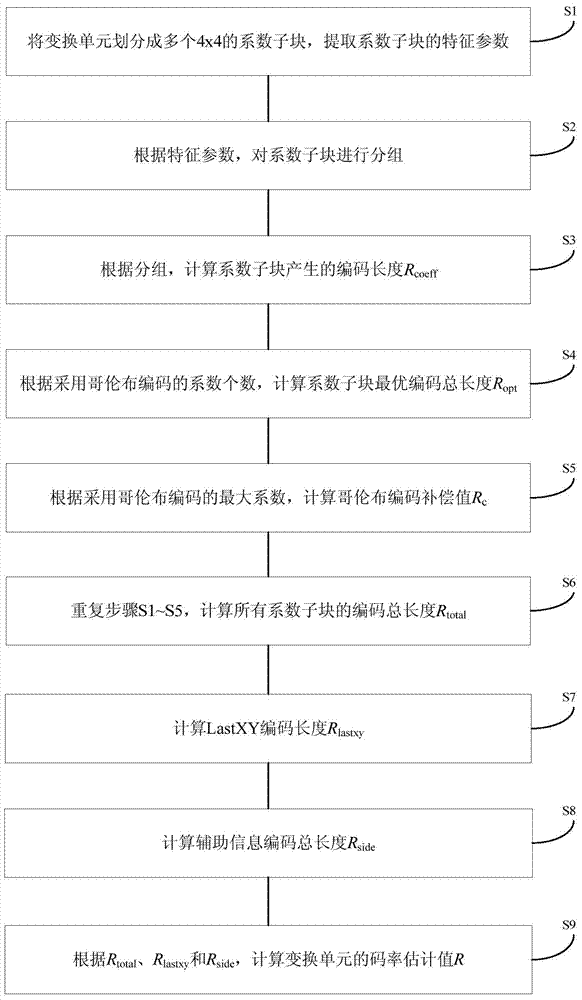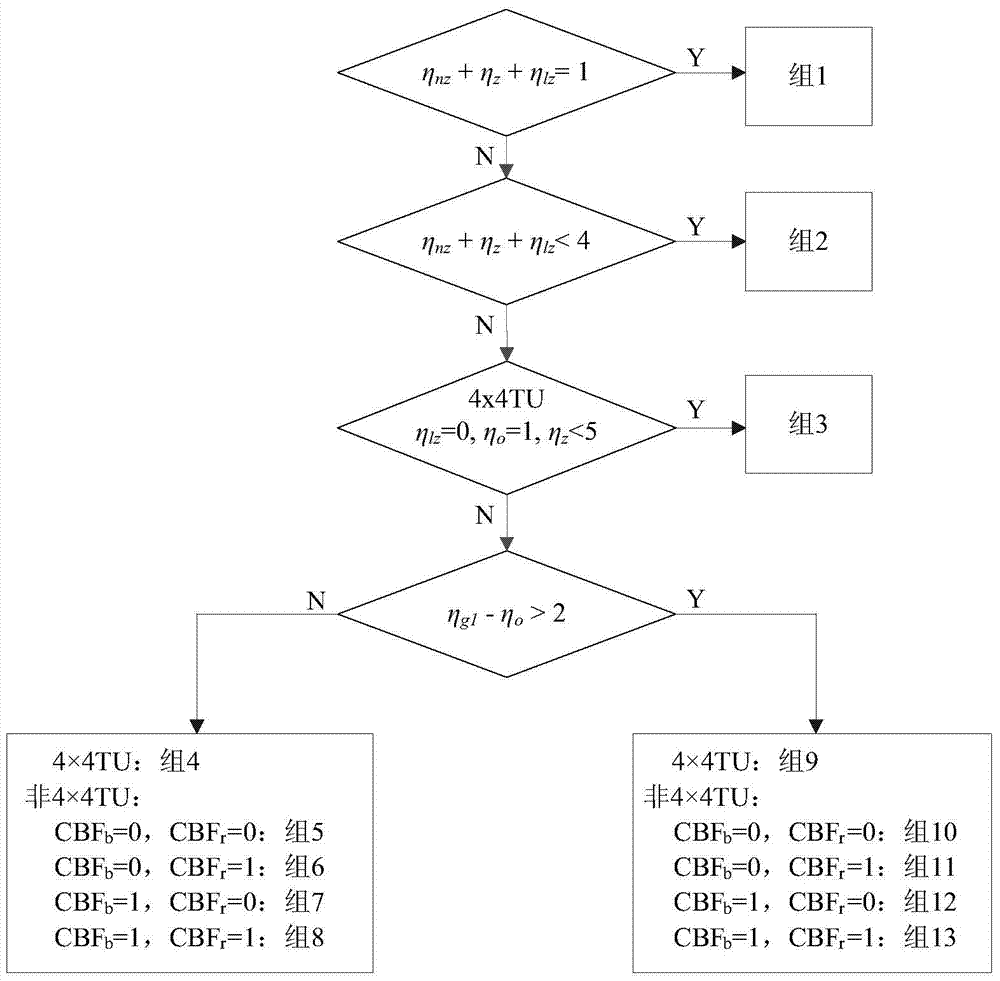Code rate estimation method for video coding
A technology of video encoding and bit rate, applied in the field of video processing, can solve problems such as slow encoding speed
- Summary
- Abstract
- Description
- Claims
- Application Information
AI Technical Summary
Problems solved by technology
Method used
Image
Examples
Embodiment Construction
[0064] The following will clearly and completely describe the technical solutions in the embodiments of the present invention with reference to the drawings in the embodiments of the present invention.
[0065] For estimation, the first step should be to analyze the organizational format of the semantic elements. First consider the code rate generated by the coefficient block. In the HEVC standard, the quantized coefficients in a transform unit (TU) have the format of semantic elements when performing entropy coding: figure 1 shown. For an NxN TU, all coefficients are first divided into 4x4 sub-blocks. The 4x4 sub-blocks are processed sequentially according to the predefined scanning order. Within each sub-block, the 16 coefficients are scanned in a certain order. The scanning order may be horizontal, vertical or diagonal, which is determined by the prediction mode. Before encoding the first sub-block, encode SkipFlag and LastXY. The meaning of SkigFlag is whether the NxN...
PUM
 Login to View More
Login to View More Abstract
Description
Claims
Application Information
 Login to View More
Login to View More - R&D
- Intellectual Property
- Life Sciences
- Materials
- Tech Scout
- Unparalleled Data Quality
- Higher Quality Content
- 60% Fewer Hallucinations
Browse by: Latest US Patents, China's latest patents, Technical Efficacy Thesaurus, Application Domain, Technology Topic, Popular Technical Reports.
© 2025 PatSnap. All rights reserved.Legal|Privacy policy|Modern Slavery Act Transparency Statement|Sitemap|About US| Contact US: help@patsnap.com



